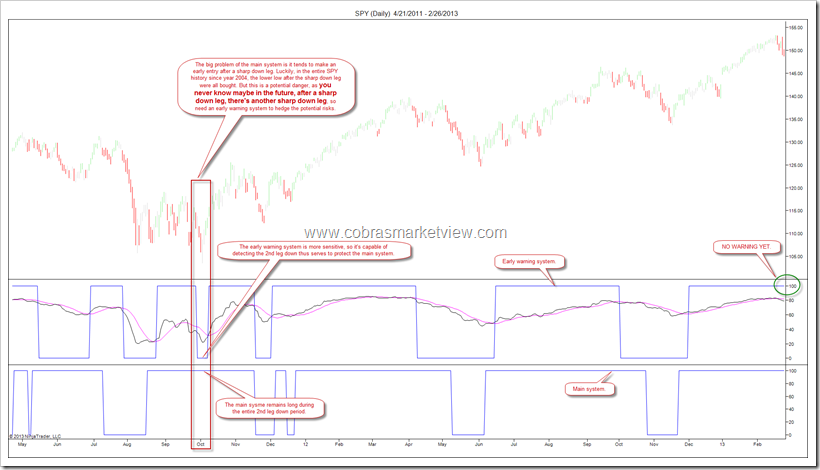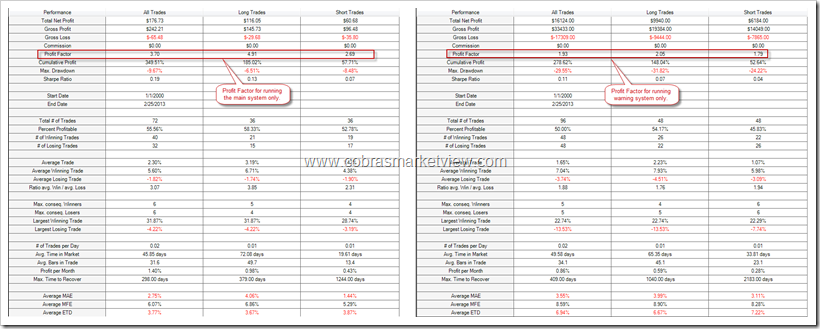关于致命问题的说明:
The chart below shows what the optimized version of Non-Stop model looks like. The major changes comparing with the trial version shown in my public chart list are: - Algorithm is used to eliminate whipsaws, so difficult to show via stockcharts now as a simple crossover may not count.
- The main signal performs good after the optimization, but, after a sharp sell off, it tends to long too early. In the back test, luckily even SPY made a lower low after the main signal longed too early, the selling was over before the lower low made too much scary damage, therefore the results are fairly good. However, if in the future, after the initial sharp sell off, the next leg down is even more furious, then the system might lose huge. So an early warning system is introduced to prevent the potential unfortunate future. If you don’t understand what I’m saying here, read the chart below carefully. After the Aug 2011 sharp sell off, the main signal longed earlier, and maintained the long status. However, in between (while the main signal maintains the long status), the Oct down leg made a new lower low, which luckily was bought later, otherwise, if this lower low kept going, then the system would suffer huge losses. Noticed that the early warning system had a warning in between (while the main signal maintains the long status), if hedge appropriately, not only would the hedge close safely, in case the main signal did go wrong, the losses would be limited.
- An early warning not only can give you a little more time to adjust positions but it also allows me some wiggle room to make a better decision based on my own analysis whether a hedge is needed or profit taking is needed and decide what kind of ETF to hedge.

The chart below compares the performance between the main signal and the early warning system. Both are good enough (Profit Factor > 1.25 is good enough), but the Profit Factor of the main signal is much better than that of the early warning system. 
|